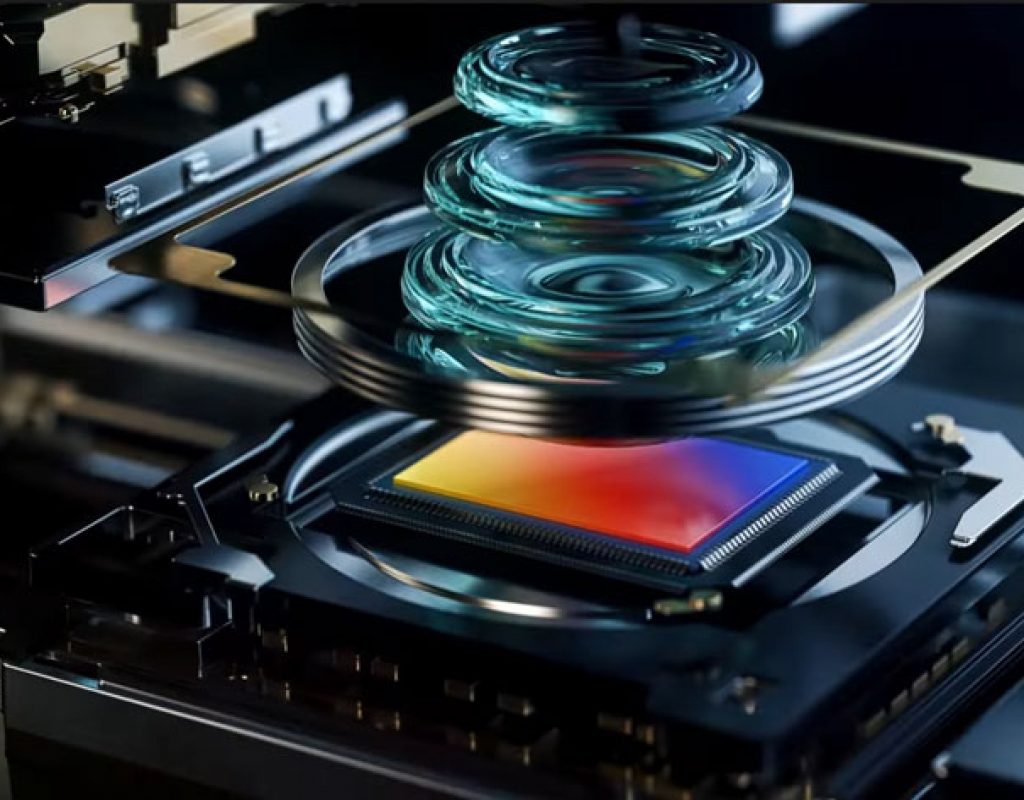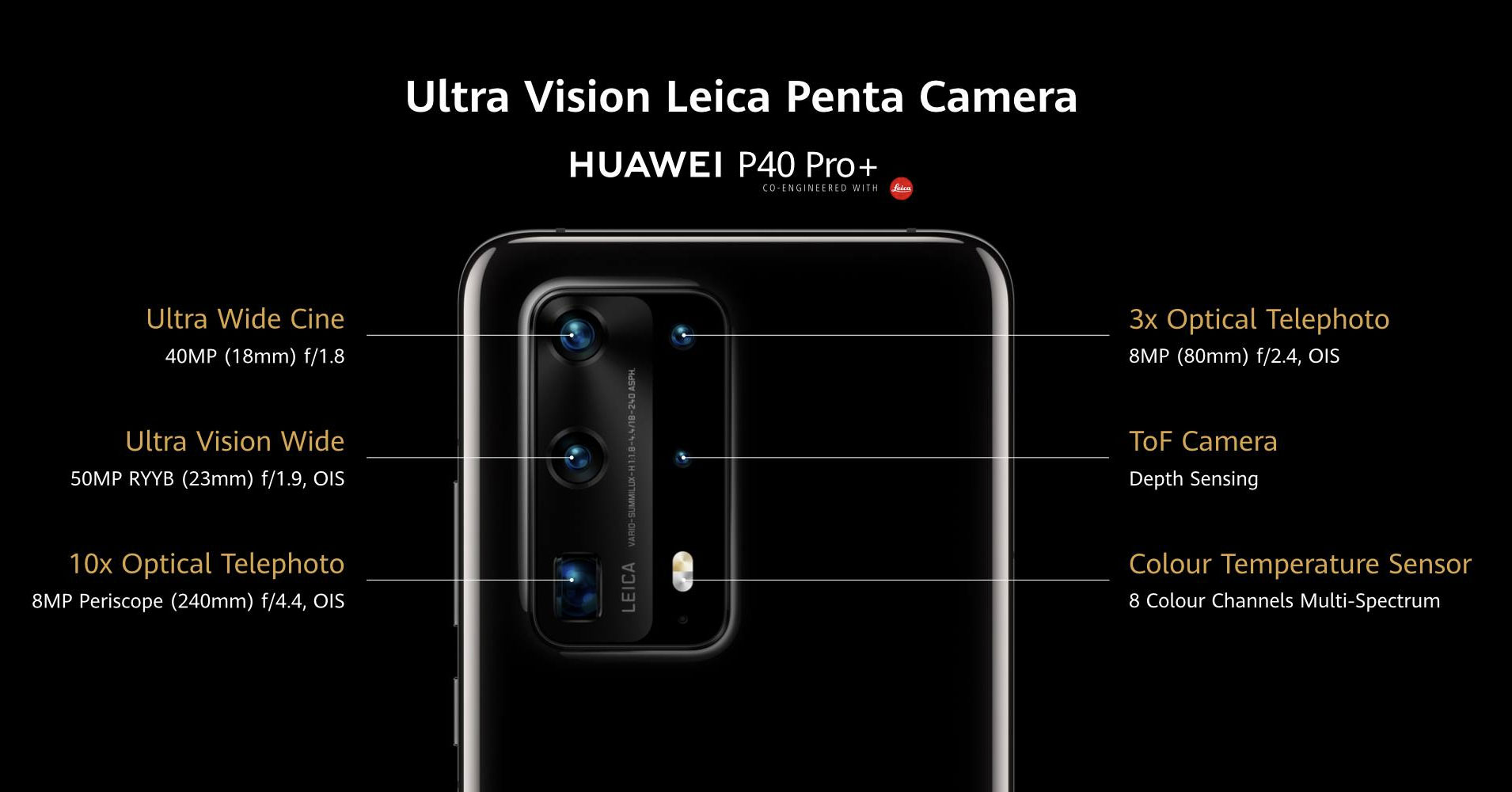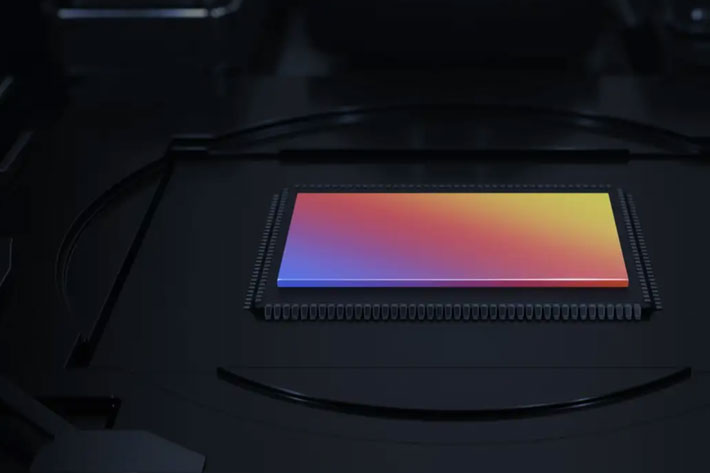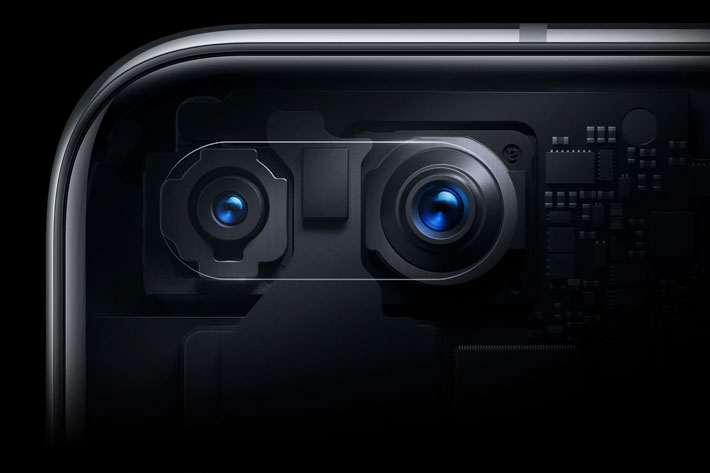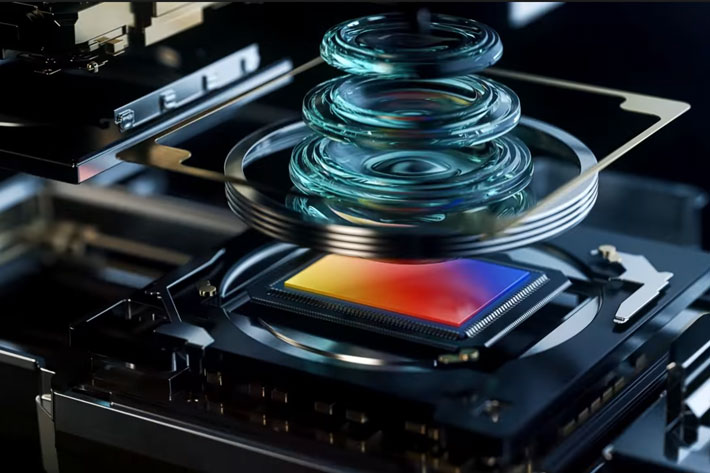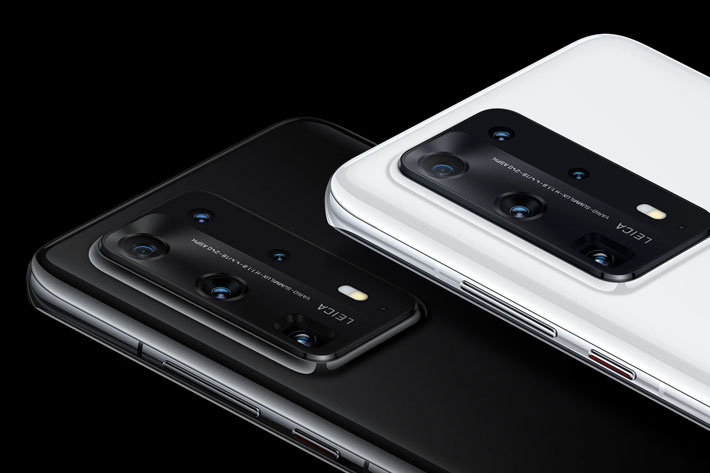
Announced this month, the new Huawei P40 Series flagship smartphones feature ground-breaking camera innovations that radically expand mobile photography and video capture possibilities.
Presented as the series that marks the age of visionary photography, the new trio of smartphones from Huawei was revealed during an online presentation this month. The Huawei P40 Pro+, Huawei P40 Pro and Huawei P40 continue the series’ heritage of imaging excellence. The large 1/1.28-inch sensor has a binned pixel size measuring 2.44μm to massively boost light intake for enhanced low-light performance, while a new periscope design that realizes 10x true optical zoom.
The Huawei P40 Series is powered by Kirin 990 5G and supports high-speed 5G and Wi-Fi 6 Plus. The advanced hardware is embedded in a compact enclosure featuring the Huawei Quad-curve Overflow Display that delivers, says the company, outstanding fluidity and responsiveness. One caveat: these smartphones have EMUI 10.1 (based on Android 10) as the operating system, but do not use Google apps, meaning you can not use things like Gmail, Maps, YouTube, the Play Store – at least officially and reliably – with them.
No Google apps inside
In fact, on May 16, 2019, the US government placed Huawei on its Entity List. This government action prohibits all US companies, including Google, from collaborating with Huawei. This means that Google is prohibited from working with Huawei on new device models. According to a note published by Google, “We have continued to work with Huawei, in compliance with government regulations, to provide security updates and updates to Google’s apps and services on existing devices, and we will continue to do so as long as it is permitted. To be clear: US law currently allows Google to only work with Huawei on device models available to the public on or before May 16, 2019. “
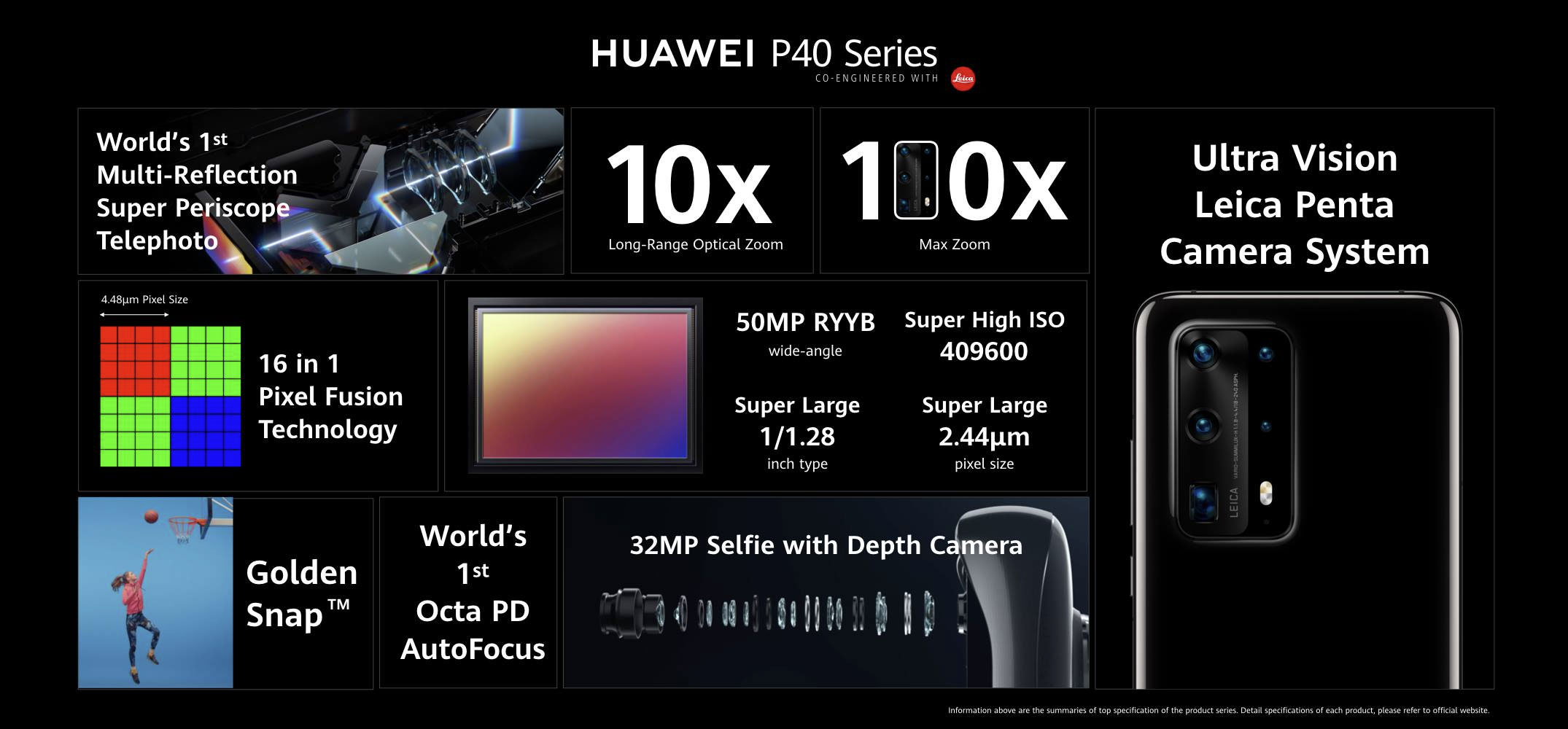
What this means for Huawei is simple: despite the quality of its products – the previous Huawei 30P has, according to reviewers, one of the best photographic cameras around – they are hard to sell to most users living either in a iOS or Android world. That’s unfortunate, because the new series has embedded the Ultra Vision Leica camera system, available in triple-camera, quad-camera and penta-camera configurations, with upgraded AI capability that revolutionizes the capture of photography and videography.
Huawei’s largest CMOS sensor
The Huawei P40 delivers, says the company, outstanding photographic results with ultra wide-angle, wide-angle and telephoto lenses. The Huawei P40 Pro features an evolution of the Leica Quad Camera with a more powerful Ultra Wide Cine Camera and ToF Camera alongside 50x SuperSensing Zoom. The Huawei P40 Pro+ lets consumers see the unprecedented with the SuperZoom Array, which supports 10x true optical zoom and 100x maximum digital zoom.
Richard Yu, CEO of Huawei Consumer BG, said “The HUAWEI P Series has always been about innovative aesthetics and making premium imaging hardware accessible, representing the very best of industrial design and technology. With an outstanding sensor, camera systems that we co-engineered with Leica, powerful chipset and HUAWEI XD Fusion Engine, the HUAWEI P40 Series exemplifies our focus and offers an all-day Super Definition experience to help consumers realise their creative vision.”
The Huawei Ultra Vision Sensor included in the full Huawei P40 Series is Huawei’s largest CMOS sensor to date. Measuring 1/1.28 inches diagonally, it supports pixel binning to achieve a pixel size of 2.44μm and Full Pixel Octa PD AutoFocus for high-speed focus at any time of day, while the Huawei XD Fusion Engine integrates and processes data from multiple cameras to generate a comprehensive improvement in picture quality.
AI removes people and reflections
From the three smartphones, the two most advanced in terms of video and photography specifications are the Pro and Pro+ versions. The Huawei P40 Pro brings faraway subjects up close with 5x optical zoom, 10x hybrid zoom and 50x maximum digital zoom. For the first time ever, the 5x Optical Telephoto Camera in the Huawei P40 Pro includes a RYYB colour filter array to boost light intake and improve quality of zoomed shots.
The Huawei P40 Pro+ has a 100x SuperZoom Array with a new periscope design that reflects light five times, extending the light path by 178 percent to support 10x true optical zoom. The optically stabilised Ultra Vision Wide Camera and SuperZoom Array work in tandem with AI to realise Triple OIS+AIS for vastly improved photo and video stabilization.
As photography, both at the capture and editing stage, gets to use more Artificial Intelligence, these smartphones feature options that depend highly on AI, like Huawey Golden Snap, which includes AI Best Moment, a new smart photography feature that chooses the best frames from a Moving Picture. AI Remove Passerby and AI Remove Reflection can do away with unwanted subjects and glare from the frame, allowing users to easily enhance their images after the fact.
A pocket-sized video camera
Huawey says that “skin tone and texture are faithfully reproduced by a new Multi-spectrum Colour Temperature Sensor and AI AWB algorithm that boost colour accuracy by 45 percent” while deep learning algorithms provide real-time portrait optimisations that enhance lighting and detail. HUAWEI P40 Pro and HUAWEI P40 Pro+ have a 32MP AF Camera and IR Depth Camera that support autofocus and Bokeh reproduction to deliver the same outstanding portrait effects that are signature to Huawei devices, as well as IR Face Unlock for device unlock even in low light conditions.
Both the P40 Pro and P40 Pro+ include a powerful pocket-sized video camera.The 40MP Ultra Wide Cine Camera in both smartphones has a focal length that is equivalent to 18mm and a 1/1.54-inch sensor supporting the 3:2 aspect ratio. SedecimPixel Fusion Technology is built into this camera to support 16-in-1 pixel binning, producing super pixels that measure 4.48μm to boost light sensitivity up to ISO51200 and enable 7680fps Ultra Slow-Motion video capture.
Directional Audio Zoom
The P40 Series supports real-time Bokeh effects for videos. Similar to the results of a wide aperture lens, this feature adds progressive Bokeh to help highlight the main subject of the footage. The telephoto camera can capture high quality zoom footage as well as 4K time-lapse videos. Directional Audio Zoom, available on both devices allows users to zoom in on an audio source and amplify its sound at the same time.
With integrated 5G connectivity with the most comprehensive 5G band support, robust AI performance and power efficiency, the Huawei P40 Series offers all the features regularly expected from modern smartphones, while adding a new layer of versatility through the new features for video and photography. While some of them may be nothing more than a trick you show once to your friends and forget – like the 50 or 100x digital zoom or the AI Remove Passerby – the 10x optical zoom and other features make these new smartphones something to consider if you want a portable camera that also allows you to make calls.
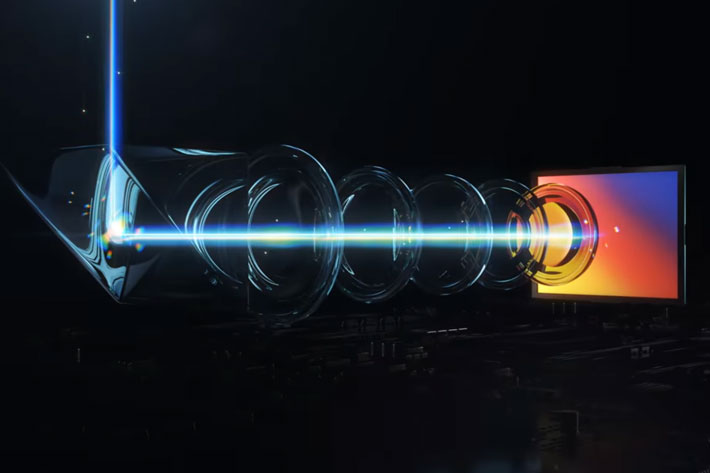
The Huawei P40 and P40 Pro will be available this April, with a price around $870 and $1,100 respectively ((converted from £699 and £899). The P40 Pro+ will be available in June, with an expected price of $1,500 (or £1,300). Availability at key regions is not confirmed, but as the situation stands, the P40 devices will not make it to the United States. The fact that Huawei’s smartphones don’t use Google Mobile Services makes it even more difficult to see them being used in many Western countries. Still, Huawei continues to develop smartphones than can rival many of the best devices from its competitors.

Filmtools
Filmmakers go-to destination for pre-production, production & post production equipment!
Shop Now